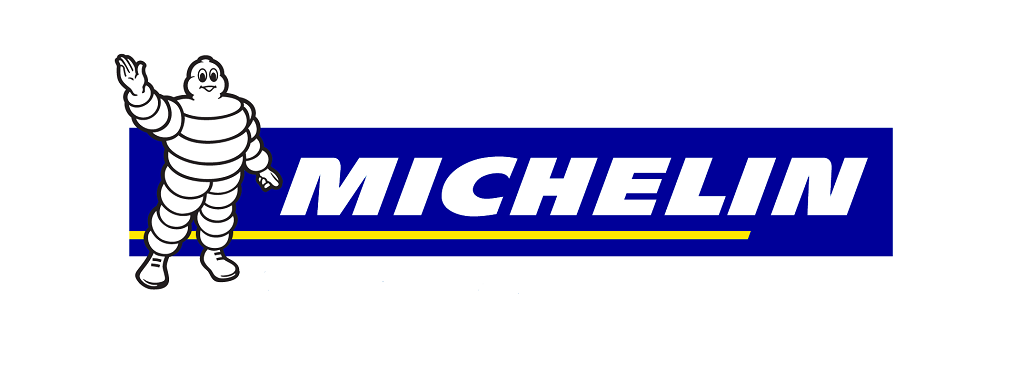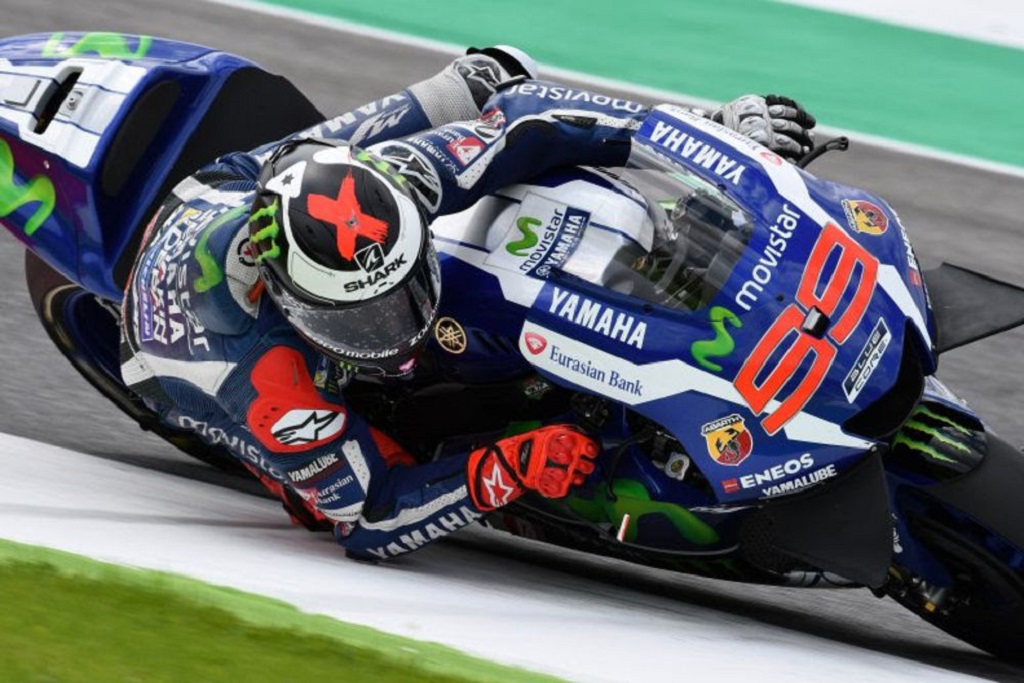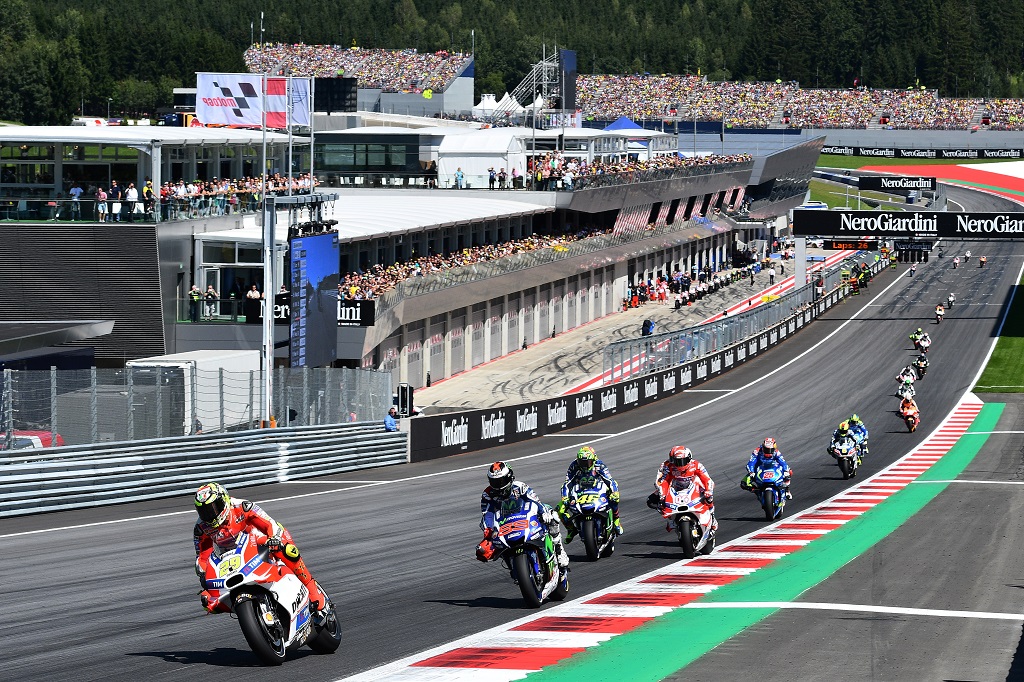1 -Tyres: always a key parameter on the Rallye Monte-Carlo
› Extensive test programme fitted to the latest-generation World Rally Cars
› Michelin’s team advisors: a vital role
› The Rallye Monte-Carlo’s notoriously uncertain weather conditions
2 – Michelin’s tyres for the 2017 Rallye Monte-Carlo
› For dry and wet ground: the MICHELIN Pilot Sport S5 and SS5 > more competitive than ever
› For slush: the MICHELIN Pilot Alpin A41 > performance in low grip conditions
› For snow/ice: the MICHELIN Pilot Alpin A4 CL > advanced technology
› Driver tyre allocations for the 2017 Rallye Monte-Carlo
3 – WRC2: bespoke tyres for this popular, closely 6fought championship
4 – Michelin’s staff on the 2017 Rallye Monte-Carlo
5 – Michelin to celebrate its 50th FIA WRC title
7 – My Rally Engineer: a new app for amateur rally drivers
8 – The 2017 WRC calendar: 13 rounds, identical to the calendar effectively contested in 2016 (i.e. not including Rally China)
1 – Tyres: always a key parameter on the Rallye Monte-Carlo
The Rallye Monte-Carlo is the round of the FIA World Rally Championship that potentially provides competitors with the widest array of surface types, so tyres invariably play a key role on the event. It is also the only round where Michelin makes available four types of tyre and three different compounds. A complementary factor to the car/driver package, tyres are a variable that repeatedly make a real strategic difference.
New technical regulations for the cars
The 2017 season sees the introduction by the FIA (Fédération Internationale de l’Automobile) of new technical regulations. The latest cars produce between 380 and 400 horsepower (compared with 330hp previously) and feature more advanced aerodynamics, plus an active centre differential.
As a result, the cars are more spectacular and deliver higher performance. That in turn will put additional constraints on their tyres. In anticipation, Michelin’s engineers took these evolutions – and the resulting higher cornering and longitudinal (acceleration and braking) forces – into account last season when developing the firm’s latest WRC tyres. As a result, the work of Michelin’s manufacturer partner engineers was able to begin early in 2016.
Tyre performance confirmed in testing
Well before the end of the 2016 world championship, and again after last November’s Rally Australia which concluded last year’s WRC, a busy test programme in association with its partners enabled Michelin Motorsport to validate the performance of its tyres on the new cars. “All our tests showed that our tyres were perfectly capable of withstanding the new cars’ higher power outputs and higher aerodynamic downforce which have led to faster cornering speeds,” says Jacques Morelli, manager of Michelin’s World Rally Championship programme. “As a result, our partners will run the same tyres on the Rallye Monte-Carlo as they did last season. The testing we did in December and earlier this month on Monte Carlo-type roads revealed differences in the times per kilometre between our soft and super soft compounds. If the conditions are dry or mixed, tyre strategy could be decisive. This year’s Monte-Carlo is likely to be a very interesting rally!”
The same tests allowed Michelin’s partners to collect the data they need for their decision support software. When it comes to the highly complex process of choosing tyres, the engineers of each partner team benefit from the assistance of a Michelin team advisor.
Michelin’s team advisors: a vital role
Michelin’s team advisors play a fundamental role throughout the season, both on events and during testing. On rallies, the drivers always have the final word when it comes to tyre choices but Michelin’s team advisors are on hand to provide advice concerning tyre pressures, wear analysis and choices thanks to their understanding of the ideal temperature windows of each solution. Their role is consequently particularly important on the Rallye Monte-Carlo which can feature a variety of conditions in the course of a single day, and sometimes even on a single stage.
After events, on their return to their base in Clermont-Ferrand, France, Michelin’s team advisors share the data and information they collect with their colleagues who use it not only to improve the firm’s competition tyres, but also to contribute to the development of new road tyres. Michelin effectively uses all the types of motorsport in which it is involved as life-size laboratories.
Specific features of the Rallye Monte-Carlo
Although the route of the 2017 Rallye Monte-Carlo is 85 percent new compared with last year’s programme, its overall format is quite similar, with a total distance of 1,411.79 kilometres, including 382.65km divided into 17 stages in the southern French Alps.
The winter classic’s traditional cocktail of difficult roads, big altitude differences and constantly changing grip levels and conditions (clear asphalt with or without a loose covering of gravel, soft or frozen dirt verges, snow, ice) will keep the crews and teams on their toes throughout. And although the majority of the route was dry earlier in January, wet and/or snowy weather before the start could add to the challenge by producing treacherous mixes likely to make tyre choices more complex still.
When choosing their tyres, the drivers base their decisions on their own experience of the event, while also taking into account the data collected during pre-rally testing and, of course, the recommendations of Michelin’s team advisors.
2 – Michelin’s tyres for the 2017 Rallye Monte-Carlo
Although the FIA (Fédération Internationale de l’Automobile) only authorises the use of one type of tyre and a choice of two compounds for the world championship’s other gravel and asphalt rounds, the Rallye Monte-Carlo permits a choice of four tyre types and three different compounds.
Dry ground:
The MICHELIN Pilot Sport S5 (S= soft). This tyre is designed for use on dry asphalt at temperatures of less than 10°C, as well as for wet conditions. Available since the 2015 Rallye Deutschland, the hard-compound MICHELIN Pilot Sport H5 (not available for the Rallye Monte-Carlo) and the soft-compound MICHELIN Pilot Sport S5 were developed with the WRC’s toughest asphalt rounds in mind, like the Rallye de France-Tour de Corse. They deliver high performance on dry and wet ground and have demonstrated their ability to cope with higher power levels than those seen in 2016. They will consequently continue to be used by Michelin’s WRC partners in 2017.
The MICHELIN Pilot Sport SS5 (SS = super soft). This tyre is for use on dry or frosty roads at temperatures close to or lower than 0°C. It made its competitive debut on last year’s Rally Monte-Carlo and features a softer compound compared with that of the MICHELIN Pilot Sport S5, but the same casing. In very cold conditions, the SS5 can deliver an improvement of up to several seconds per kilometre. It is likely to figure prominently in the teams’ strategies on the Rallye Monte-Carlo as they endeavour to choose the right compound as a function of the profile of each loop of stages.
Size (MICHELIN Pilot Sport S5 and SS5): 235/40R18 (equivalent to 20/65-18).
Snow:
The MICHELIN Pilot Alpin A4. This tyre resembles a conventional winter tyre due to its overall profile and siped tread blocks. Its development – which was carried out in parallel with that of the MICHELIN Pilot Alpin 5 road tyre by a team of engineers from Michelin Motorsport and the Michelin Technology Centre in Ladoux, France – used data gleaned in motorsport and stands out as a prime example of how Michelin carries over the technologies developed in different forms of competition to its road tyres. The WRC tyre features a reinforced casing and was designed to withstand the constraints generated by the world’s top rally cars on snowy ground, while at the same time delivering a very high level of traction, cornering control and braking performance.
Size: 215/45R18 (equivalent to 18/65-18).
Ice:
The MICHELIN Pilot Alpin A4 CL. In Nordic countries, studded tyres are commonplace in winter. However, that is not the case in France where their use is covered by strict legislation. To protect road surfaces during the Rallye Monte-Carlo, the FIA regulations allow the MICHELIN Pilot Alpin A4 CL to be fitted with just 200 studs (compared with 384 for Rally Sweden) and their tips emerge just 2mm from the tread blocks. The MICHELIN Pilot Alpin A4 CL enables drivers to contest ice-covered stages without causing damage to roads. The studs weigh less than 2g each and are inserted into the tread individually using a patented Michelin technique.
Driver tyre allocations for the 2017 Rallye Monte-Carl
The number of tyres available to each driver is capped by the regulations which specify a total allocation as well as a maximum number of tyres that the drivers can actually use. The quotas for the Rallye Monte-Carlo are higher than those enforced at other rounds because of the broader spectrum of possible conditions.
The total allocation per WRC driver for the 2017 Rallye Monte-Carlo 2017 is 80 tyres:
– 20 x MICHELIN Pilot Sport S5s
– 24 x MICHELIN Pilot Sport SS5s
– 12 x MICHELIN Pilot Alpin A4s
– 24 x MICHELIN Pilot Alpin A4 CLs (studded)
During the rally (shakedown included), WRC drivers may use no more 43 tyres from this overall allocation.
3 – WRC2: bespoke tyres for this popular, closely-fought championship
The cars which star in WRC2 are less powerful and only have two driven wheels. As at WRC level, open competition between tyre companies is authorised and the level of competition is extremely close. Many WRC drivers have emerged via this class and Michelin has topped the series for the past three years. On the Rallye Monte-Carlo, the entry list includes drivers like Norway’s Andreas Mikkelsen and Frenchman Eric Camilli who both competed at WRC level in 2016 but whose berths were either directly or indirectly compromised by the withdrawal of Volkswagen.
For the 2017 Rallye Monte-Carlo, Michelin’s WRC2 partners will use tyres that are commercially available,
For dry and damp ground, they will be able to count on the performance and versatility of the MICHELIN Pilot Sport R S and MICHELIN Pilot Sport R SS (S = soft compound / SS = super soft). Their size is the same as the tyres used by the World Rally Cars (235/40R18, equivalent to 20/65-18). In more wintry conditions, the drivers will be able to fit the MICHELIN NA00 (snow) or its studded equivalent, the MICHELIN NA00 CL (ice), as was already the case in 2016. Again like the tyres used by WRC competitors, the snow/ice tyre is narrower than the dry/wet weather asphalt tyre (215/45R18, equivalent to 18/65-18).
The allocation for each WRC2 driver on the 2017 Rallye Monte-Carlo is 72 tyres:
- 16 x MICHELIN Pilot Sport R Ss
- 20 x MICHELIN Pilot Sport R SSs
- 12 x MICHELIN NA00s
- 24 x MICHELIN NA00 CLs
During the rally (shakedown included), WRC2 drivers may use no more 41 tyres from this overall allocation.
Michelin will have 2,430 tyres available for the Rallye Monte-Carlo (WRC: 900 / WRC2: 1,250 / RGT: 280).
4 – Michelin’s staff on the 2017 Rallye Monte-Carlo
Michelin will have a staff of 20 on the Rallye Monte-Carlo:
– Pascal Couasnon, Director, Michelin Motorsport
– Olivier Vialle, Marketing Director, Michelin Motorsport
– Jacques Morelli, Manager, FIA WRC Programme, Michelin Motorsport
– Two developers
– Four Team Advisors
– Two coordinators
– Eight fitters
– One Michelin Motorsport Communications Manager
5 – Michelin to celebrate its 50th FIA WRC title
In 1973, when the day’s equivalent to the FIA (Fédération Internationale de l’Automobile) staged the first World Rally Championship, Michelin formally inaugurated a Competitions department, the forerunner of today’s Michelin Motorsport. The Rallye Monte-Carlo was already an internationally reputed event and winning it was even seen as a priority over winning the championship itself.
Conquering the extreme conditions thrown at them by the Rallye Monte-Carlo was a huge challenge for the drivers who, in their bid to earn the glory associated with winning the classic, were offered a range of up to 60 different types of tyre! Thanks to today’s technology, Michelin has since slimmed the available range down to just four different types of tyre and three different compounds.
The 1973 World Rally Championship kicked off with the Rallye Monte-Carlo which was won by the Michelin-equipped Alpine Renault A110 of Jean-Claude Andruet/Biche.
It was the first of Michelin’s 25 Rallye Monte-Carlo victories as a WRC qualifying round:
1973 – Andruet/Biche – Alpine Renault A110 1800
1978 – Nicolas/Laverne – Porsche 911
1979 – Darniche/Mahé – Lancia Stratos HF
1981 – Ragnotti/Andrié – Renault 5 Turbo
1982 – Röhrl/Geistdörfer – Opel Ascona 400
1984 – Röhrl/Geistdörfer – Audi Quattro
1985 – Vatanen/Harryman – Peugeot 205 T16
1988 – Saby/Fauchille – Lancia Delta 4WD
1989 – Biasion/Siviero – Lancia Delta Integrale
1990 – Auriol/Occelli – Lancia Delta Integrale 16V
1992 – Auriol/Occelli – Lancia HF Integrale 16V
1993 – Auriol/Occelli – Toyota Celica Turbo 4WD
1994 – Delecour/Grataloup – Ford Escort Cosworth
1998 – Sainz/Moya – Toyota Corolla WRC
1999 – Mäkinen/Mannisenmaki – Mitsubishi Lancer Evo VI
2000 – Mäkinen/Mannisenmaki – Mitsubishi Lancer
2001 – Mäkinen/Mannisenmaki – Mitsubishi Lancer
2003 – Loeb/Elena – Citroën Xsara WRC
2004 – Loeb/Elena – Citroën Xsara WRC
2005 – Loeb/Elena – Citroën Xsara WRC
2012 – Loeb/Elena – Citroën DS3 WRC
2013 – Loeb/Elena – Citroën DS3 WRC
2014 – Ogier/Ingrassia – Volkswagen Polo R WRC
2015 – Ogier/Ingrassia – Volkswagen Polo R WRC
2016 – Ogier/Ingrassia – Volkswagen Polo R WRC
50 WRC titles
The 2016 World Rally Championship saw Michelin win the Manufacturers’ and Drivers’ titles in association with Volkswagen and Sébastien Ogier/Julien Ingrassia who took the French tyre firm’s total to 50 world crowns. Michelin will celebrate this landmark figure on the 2017 Rallye Monte-Carlo. The 24 Drivers’ and 26 Manufacturers’ WRC titles that Michelin has won since 1973 are:
1973 – Alpine-Renault
1981 – Talbot Lotus
1982 – Walter Röhrl (Opel Ascona 400)
1983 – Hannu Mikkola (Audi Quattro)
1984 – Stig Blomqvist and Audi
1985 – Timo Salonen and Peugeot
1986 – Juha Kankkunen and Peugeot
1988 – Miki Biasion and Lancia
1989 – Miki Biasion and Lancia
1990 – Lancia
1991 – Juha Kankkunen and Lancia
1992 – Lancia
1993 – Juha Kankkunen and Toyota
1994 – Didier Auriol and Toyota
1996 – Tommi Mäkinen (Mitsubishi Lancer Evo3)
1997 – Tommi Mäkinen (Mitsubishi Lancer Evo4)
1998 – Tommi Mäkinen and Mitsubishi
1999 – Tommi Mäkinen and Toyota
2000 – Marcus Grönholm and Peugeot
2001 – Peugeot
2002 – Marcus Grönholm and Peugeot
2003 – Citroën
2004 – Sébastien Loeb and Citroën
2005 – Sébastien Loeb and Citroën
2011 – Sébastien Loeb and Citroën
2012 – Sébastien Loeb and Citroën
2013 – Sébastien Ogier and Volkswagen
2014 – Sébastien Ogier and Volkswagen
2015 – Sébastien Ogier and Volkswagen
2016 – Sébastien Ogier and Volkswagen
7 – My Rally Engineer: a Michelin tool for rally drivers
Michelin’s glorious rallying record is due in part to the extremely close associations it has enjoyed and continues to enjoy with its team and driver partners. To take this spirit a step further, it has now developed the innovative new My Rally Engineer app which has been thought through to assist and advise rally competitors of all levels, from amateurs to professionals.
Based on information provided by the user (type of car, special technical characteristics, suspension geometry), it can be used to prepare for upcoming events. It keeps a record of how available tyres are used during the rally, while also providing the driver and co-driver with personalised tips from Michelin concerning tyre choices and air pressures as a function of the prevailing weather conditions, temperatures, stage profiles and type of car.
My Rally Engineer also stores a precise record of the data and advice received from Michelin on previous events for later use.
To be sure that it meets the needs of rally crews as closely as possible, its development began on France’s Rallye du Var in 2015. That was followed by testing in the field to make the new tool as useful, practical and easy to use as possible.
With the My Rally Engineer app, drivers can now become experts in tyre strategy thanks to the enhanced management of their Michelin tyres.
Available for the first time on the 2017 Rallye Monte-Carlo, the My Rally Engineer app will provide access to regularly-updated information about stage conditions , while an upgrade is due in the weeks ahead, initially in French, then in a choice of languages.
Poised to become an indispensable tool for rally crews, the app can be downloaded free of charge for use with Apple and Android platforms.
8 – The 2017 FIA World Rally Championship calendar
The 2017 FIA World Rally Championship calendar is identical to the calendar effectively contested in 2016 (i.e. not including Rally China).
| DATE | RALLY |
| January 19-22 | Rallye Monte-Carlo |
| February 9-12 | Rally Sweden |
| March 9-12 | Rally Guanajuato Corona Mexico |
| April 6-9 | Che Guevara Energy Drink Tour de Corse |
| April 27-30 | Rally Argentina |
| May 18-21 | Vodafone Rally de Portugal |
| June 8-11 | Rally Italia Sardegna |
| June 19-July 2 | 74th PZM Rally Poland |
| July 27-30 | Neste Rally Finland |
| August 17-20 | ADAC Rallye Deutschland |
| October 5-8 | RallyRacc Catalunya – Rally de España |
| October 26-29 | Dayinsure Wales Rally GB |
| November 16-19 | Kennards Hire Rally Australia |



